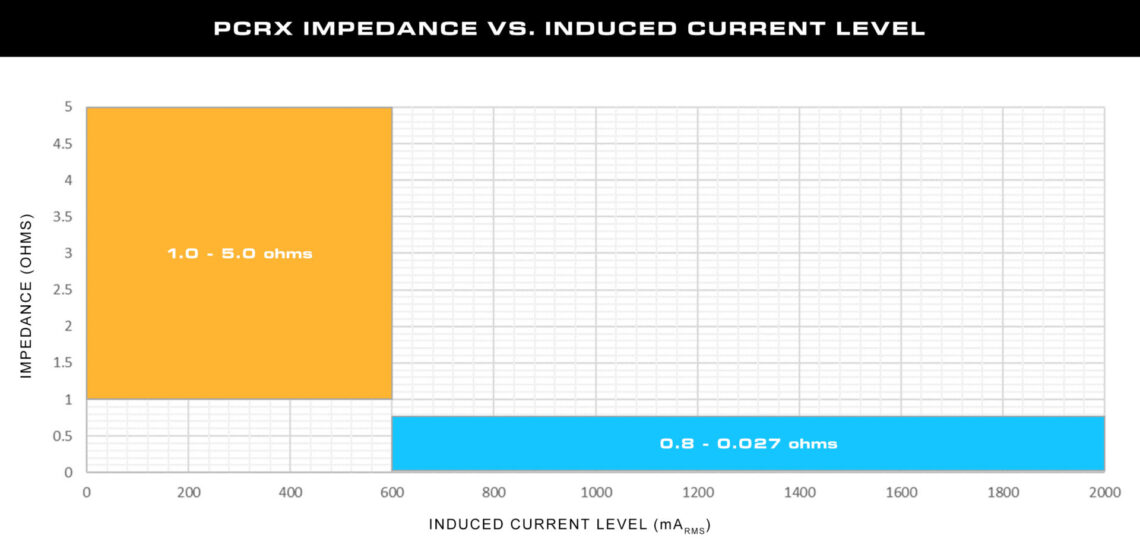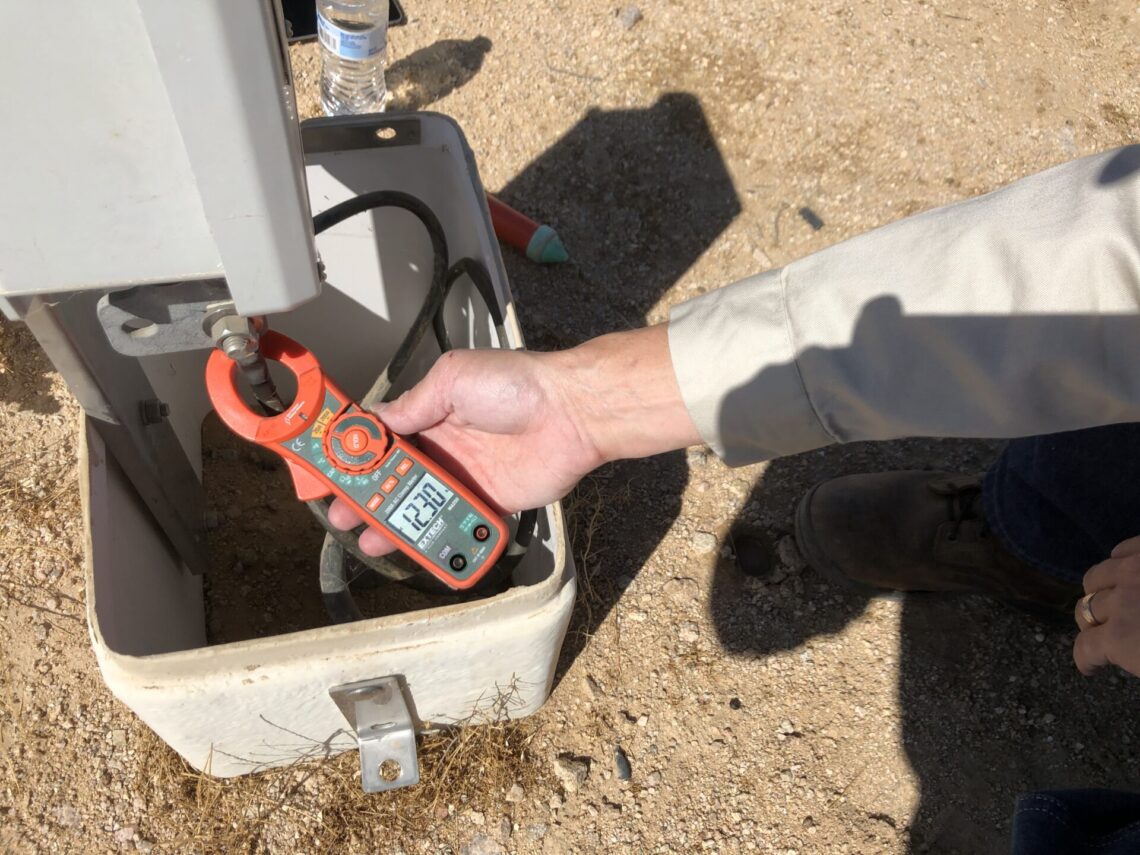Important Considerations When Applying PCRX with Low AC Interference
The most advanced decoupler in the world, the PCRX, is virtually invisible to interrupted survey testing and provides simultaneous DC decoupling and AC continuity/grounding when used with cathodically protected structures.
AC mitigation, where decouplers are installed between the pipeline and the mitigation grounding system, is the most common application for the PCRX. In most AC mitigation applications, there is significant AC interference with the pipeline resulting in several amps of induced current to flow through each decoupler to the grounding system. However, in some applications with relatively low AC interference, less than 1 Arms may flow through individual decouplers. In these rare cases, the PCRX may operate differently, and it is important to understand how this could affect your pipeline.
PCRX Operation with Low AC Current
The PCRX operates differently on pipelines having lower AC interference, specifically when the AC current flowing through the PCRX is below 0.6 Arms. The AC impedance of the PCRX varies with AC current, and below 0.6 Arms, the impedance is significantly higher than that at higher AC current levels, as shown in the chart below.

Figure 1
How Could This Affect My Pipeline?
In most cases, the higher impedance at low induced AC currents has little effect on the operation of the PCRX or the pipeline. Even at its highest impedance levels, the PCRX will maintain a maximum of 2 Vrms AC across the terminals under normal operating conditions, therefore keeping the pipeline AC potentials low near the PCRX pipeline connection. But other possible effects of the higher impedance at low current levels should be considered.
Influence on Blocking Threshold Selection
Since decouplers go into full conduction when the total voltage across the terminals reaches the threshold voltage, both DC and AC voltage across the terminals during normal operating conditions must be considered when choosing threshold voltage ratings. For example, assuming the maximum of 2 Vrms (2.8 Vpeak) AC across the PCRX terminals, the -4.5/+3.5 V threshold rating would permit a maximum DC operating voltage range of -1.7 V to +0.7 V. Similarly, in this case, the -5.5/+2.5 V rating would allow for a maximum DC operating range of -2.7 to -0.3 V. The PCRX threshold voltage ratings were designed to accommodate most DC operating conditions even under maximum steady state AC levels.
Possible Effect on AC Current Density
AC mitigation systems are designed to create a low resistance path to ground for induced AC. The impedance of any device in this path can affect the AC current density readings on the pipeline. This is why Dairyland decouplers, including the PCRX, are designed to have low nominal AC impedance. However, in rare cases when the PCRX impedance increases due to low induced AC levels, increased measured AC current density may be observed along the pipeline. The actual impact depends on the specific system design, soil resistivity and other system factors. The impedance values published in the PCRX Technical Literature should be incorporated into AC mitigation models when evaluating design goals for voltage and current density.
Potential Impact on AC Rail Interference Applications
It can take up to 15 seconds for the PCRX to transition from high to low impedance. For AC rail interference and other applications where there may be rapid transitions in AC interference from below 0.6 Arms to higher current levels, the PCRX may remain in a high impedance mode for several seconds even though the AC current has increased above 0.6 Arms. During this short transition period, the resulting elevated AC voltage across the terminals may cause the PCRX to go into conduction and a momentary loss in DC isolation. The PCRX would still provide AC mitigation and over-voltage protection. However, be aware that measured pipeline potentials may be affected during this brief transition period and should be discarded.

Figure 2
How can I know if my PCRX will have low AC current?
AC mitigation system modeling is recommended as a best practice for new installations. Modeling not only predicts an optimal design for control of AC interference, but also allows for estimating AC current flow through mitigation systems during steady-state and fault conditions. This information can be used to select proper decoupler models and determine at what impedance PCRX units will operate. PCRX impedance values found in the PCRX Technical Literature should be incorporated into AC mitigation models when evaluating systems with PCRX units.
For existing installations, the steady-state AC current can easily be measured using a clamp-on ammeter as shown in Figure 2.
Contact Dairyland for recommendations on PCRX application if steady-state AC current is either modeled or measured to be less than 0.6 Arms.
PCRX Will Always Improve Interrupted Survey Data
Even at low steady-state AC current levels, the PCRX will always improve the accuracy of instant-off measurements without having to disconnect the PCRX from the pipeline. And it will always provide DC isolation from grounding systems while simultaneously protecting the pipeline from over-voltage conditions such as AC faults and lightning.
Want To Dive Deeper?
Join One of Our Learning Events.
Our event schedule provides you the in-depth product and application training you need to correctly apply Dairyland products.